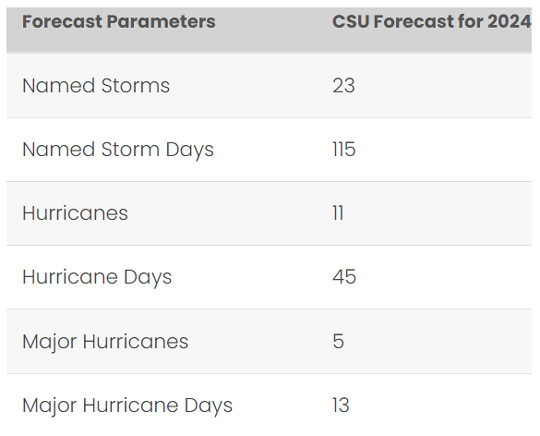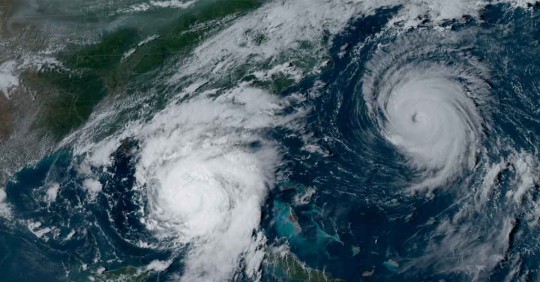Forecasters Predict Extremely Active Hurricane Season
April 5, 2024
Colorado State University hurricane researchers are predicting an extremely active Atlantic hurricane season in their initial 2024 forecast. The team cites record warm tropical and eastern subtropical Atlantic sea surface temperatures as a primary factor for their prediction of 11 hurricanes this year.
The report also includes the probability of major hurricanes making landfall: 42% for the Gulf Coast from the Florida panhandle westward to Brownsville (average from 1880–2020 is 27%).
When waters in the eastern and central tropical and subtropical Atlantic are much warmer than normal in the spring, it tends to force a weaker subtropical high and associated weaker winds blowing across the tropical Atlantic. These conditions will likely lead to a continuation of well above-average water temperatures in the tropical Atlantic for the peak of the 2024 Atlantic hurricane season. A very warm Atlantic favors an above-average season, since a hurricane’s fuel source is warm ocean water. In addition, a warm Atlantic leads to lower atmospheric pressure and a more unstable atmosphere. Both conditions favor hurricanes.
 While the tropical Pacific is currently characterized by El Niño conditions, these are likely to transition to La Niña conditions by the peak of the Atlantic hurricane season from August to October. La Niña tends to decrease upper-level westerly winds across the Caribbean into the tropical Atlantic. These decreased upper-level winds result in reduced vertical wind shear, favoring Atlantic hurricane formation and intensification.
While the tropical Pacific is currently characterized by El Niño conditions, these are likely to transition to La Niña conditions by the peak of the Atlantic hurricane season from August to October. La Niña tends to decrease upper-level westerly winds across the Caribbean into the tropical Atlantic. These decreased upper-level winds result in reduced vertical wind shear, favoring Atlantic hurricane formation and intensification.
Given the combined hurricane-favorable signals of an extremely warm Atlantic and a likely developing La Niña, the forecast team has higher-than-normal confidence for an April outlook that the 2024 Atlantic hurricane season will be very active. This is the highest prediction for hurricanes that CSU has ever issued with their April outlook.
The CSU Tropical Weather and Climate team is predicting 23 named storms during the Atlantic hurricane season, which runs from June 1 to Nov. 30. Of those, researchers forecast 11 become hurricanes and five to reach major hurricane strength (Saffir/Simpson Category 3-4-5) with sustained winds of 111 miles per hour or greater.
The CSU Tropical Weather and Climate Team is part of the Department of Atmospheric Science in the Walter Scott, Jr. College of Engineering at CSU and is one of the top ranked Atmospheric Science programs in the world.
Comments
One Response to “Forecasters Predict Extremely Active Hurricane Season”




42% from the gulf coast of Florida to Brownsville, Texas. I’m not sure of the exact amount but I would say that is a 42% chance of 90%+- of the area for landfall. What are the odds?